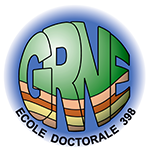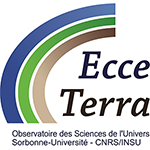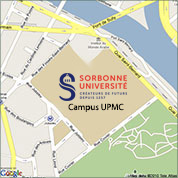Séminaire ISTeP - Jacques Touret
(Emérite Mines / Vrije Universiteit)
HT/UHT-Granulites et SUPERCONTINENTS
Lower crustal granulites, which constitute the base of all continents, belong to two series: high-pressure granulites generated by crustal thickening (subduction) and (ultra)high-temperature granulites associated with crustal extension. Fluid inclusions and metasomatic features indicate that the latter were metamorphosed in the presence of low-water activity fluids (high-density CO2 and brines), which have invaded the lower crust at peak metamorphic conditions (fluid-assisted granulite metamorphism). High-pressure and (ultra)high-temperature granulites commonly occur along elongated paired belts. They were formed, from the early Proterozoic onwards, during a small number of active periods lasting a few hundreds of m.y. These periods were separated from each other by longer periods of stability. Each period ended with the formation of a supercontinent whose amalgamation coincided with low- to medium pressure (ultra)high-temperature granulite metamorphism, immediately before continental break-up. It is proposed that large quantities of mantle-derived CO2 stored in the lower crust at the final stage of supercontinent amalgamation, are released into the hydro- and atmosphere during breakup of the supercontinent. Fluid-assisted granulite metamorphism, therefore, appears to be an important mechanism for transferring deep mantle fluids towards the Earth's surface. Possible consequences could have been the sudden end of Proterozoic glaciations, as well as the post-Cambrian explosion of life.
13/02/2015 à 12h30, Salle Fourcade (Tour 55/56, 4ème étage)
Egalement dans la rubrique
- Séminaire ISTeP - Chrystèle Sanloup
- Séminaire ISTeP - Marco Scambelluri
- Séminaire ISTeP - Déborah Chavrit
- Séminaire ISTeP - Evgueni Burov
- Séminaire ISTeP - Anne Le Friant
- Séminaire ISTeP - Pierre Valla
- Séminaire ISTeP - Ramadan Ghalayini
- Séminaire ISTeP - Matthias Delescluse
- Séminaire ISTeP - Séverine Moune
- Séminaire ISTeP - Lucie Tajcmanova
- Séminaire ISTeP - Gabriel Coelho
- Séminaire ISTeP - Laurie Bougeois
- Séminaire ISTeP - Sanae El Janyani
- Séminaire ISTeP - Arthur Paté
- Séminaire ISTeP - Nicolas Beaudoin
- Séminaire ISTeP - Kosuke Ueda
- Séminaire ISTeP - Ali Hannouche
- Séminaire ISTeP - Benjamin Cochain
- Séminaire ISTeP - Behzad Nasri
- Séminaire ISTeP - Daniel Pastor Galan
- Séminaire ISTeP - Sara Lafuerza Colas
- Séminaire ISTeP - Jean-Pierre Suc
- Séminaire ISTeP - Pierpaolo Zuddas
- Séminaire ISTeP - Agnès Elmaleh
- Séminaire ISTeP - John Wakabayashi
- Séminaire ISTeP - Jonas Ruh
- Séminaire ISTeP - Timm John
Chiffres clés (Mars 2025)
L'ISTeP comprend 131 membres dont :
Permanents (66)
- Professeurs : 17 (+2 PAST)
- Maîtres de conférence : 26
- Directeurs de recherche CNRS : 1
- Chargés de recherche CNRS : 1
- ITA : 19
Personnels non permanents (65)
- Collaborateurs bénévoles / émérites : 17
- Chaire de professeur junior : 1
- Enseignants-chercheurs contractuel : 2
- 1 MCF accueil en délégation
- ATER et Post-Docs : 9
- Doctorants : 32
- ITA-BIATSS : 3





